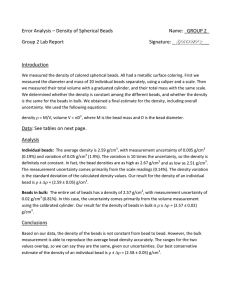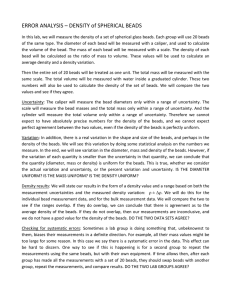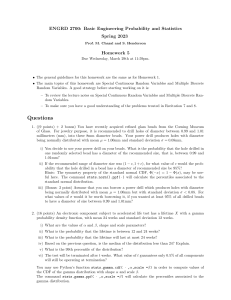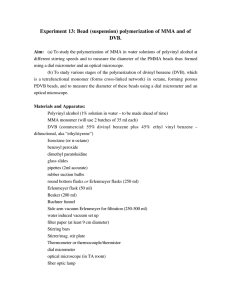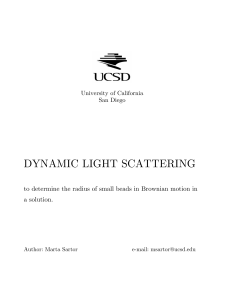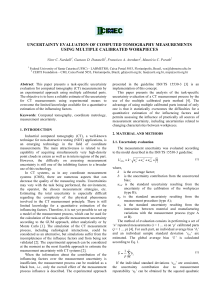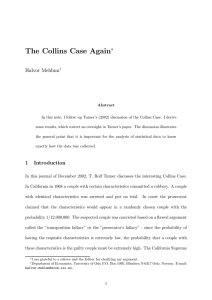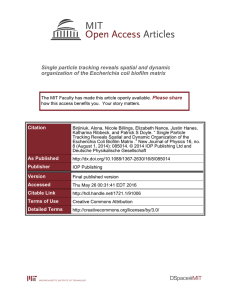Error Analysis Lab – PHY 141 and PHY 161
advertisement
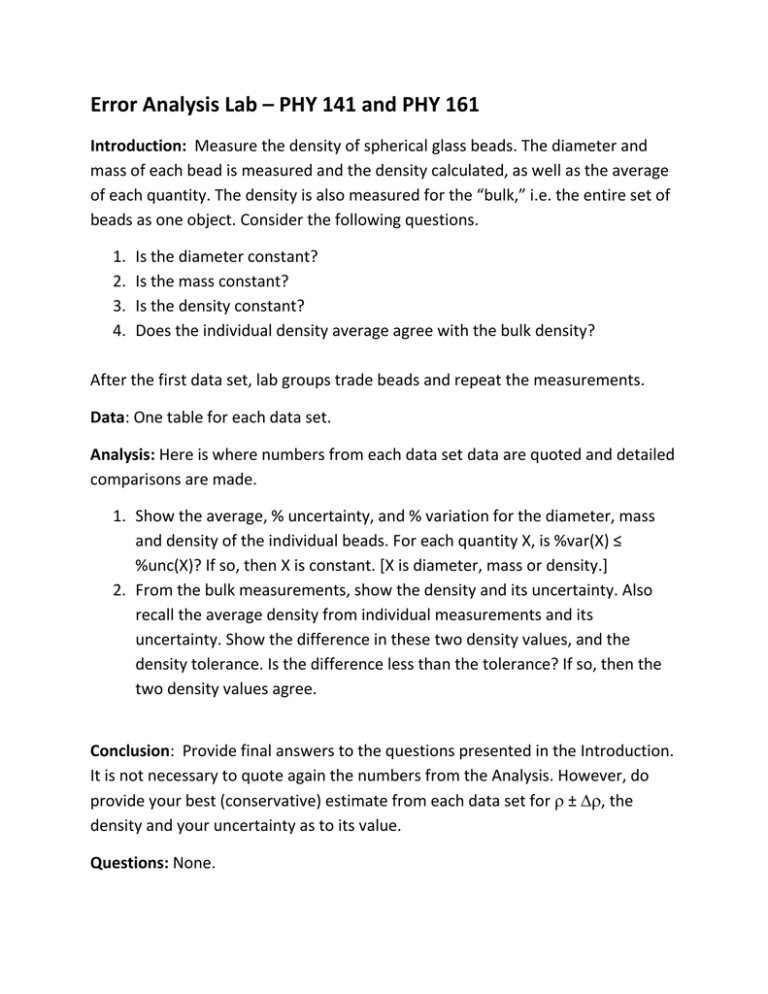
Error Analysis Lab – PHY 141 and PHY 161 Introduction: Measure the density of spherical glass beads. The diameter and mass of each bead is measured and the density calculated, as well as the average of each quantity. The density is also measured for the “bulk,” i.e. the entire set of beads as one object. Consider the following questions. 1. 2. 3. 4. Is the diameter constant? Is the mass constant? Is the density constant? Does the individual density average agree with the bulk density? After the first data set, lab groups trade beads and repeat the measurements. Data: One table for each data set. Analysis: Here is where numbers from each data set data are quoted and detailed comparisons are made. 1. Show the average, % uncertainty, and % variation for the diameter, mass and density of the individual beads. For each quantity X, is %var(X) ≤ %unc(X)? If so, then X is constant. [X is diameter, mass or density.] 2. From the bulk measurements, show the density and its uncertainty. Also recall the average density from individual measurements and its uncertainty. Show the difference in these two density values, and the density tolerance. Is the difference less than the tolerance? If so, then the two density values agree. Conclusion: Provide final answers to the questions presented in the Introduction. It is not necessary to quote again the numbers from the Analysis. However, do provide your best (conservative) estimate from each data set for ρ ± ∆ρ, the density and your uncertainty as to its value. Questions: None.

